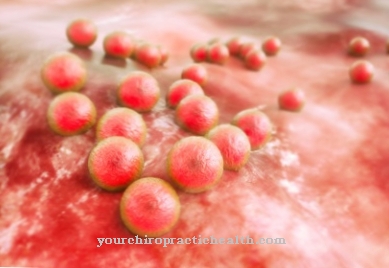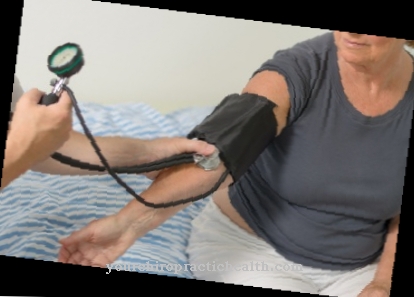The drug Rotigotine belongs to the group of non-ergoline dopamine agonists and is used in the therapy of restless legs syndrome or Parkinson's disease.
What is rotigotine?
Rotigotine is a so-called aminotetroline and tiophene derivative that is very similar to dopamine. It is lipophilic and has an extremely low molecular weight, so it is very suitable for administration in the form of a patch.
Pharmacological effect

Rotigotine mimics the action of this substance at certain receptors for the messenger substance dopamine, this beneficial effect being caused by the D3, D2 and D1 receptors, which are activated in the caudate nucleus.
The caudate nucleus is found in the endbrain (cerebrum) and is partly responsible for controlling voluntary movements.
Medical application & use
Rotigotine is used in the early stages of Parkinson's disease, in later stages it can also be combined with Levopoda. In addition, the drug is also used in restless legs syndrome. It is applied in the form of a so-called transdermal patch from which the active ingredient is released. As a result, rotigotine is continuously supplied for 24 hours, which leads to an improvement in mobility and a reduction in dyskinesia (walking disorders).
The dose is between 1 and 16 mg per 24 hours and the patch works independently of absorption disorders, gastroparesis and meals. The drug is available in four different patch sizes, which release either 2, 4, 6 or 8 mg of rotigotine within 24 hours.
Usually the drug is used for a long time. It starts with a low dose, then increases it weekly until the patient reaches the dose that is right for him. Many patients achieve a dose of 6 to 8 mg per day within four weeks, with 8 mg being the maximum dose. Patients suffering from advanced Parkinson's disease reach the maximum dose of 16 mg per day after about seven weeks.
Rotigotine is applied at the same time each day, the skin should be dry, clean and intact. In addition, the job has to be changed every day. Frequent application sites are the upper arm, the hips, the thighs or the stomach.
Patients should not use lotions, oils, creams, or other personal care products near the patch. If the patch is stuck on a hairy area of the skin, the area should be shaved three days in advance before applying the patch.
Rotigotine is also used in low doses for restless legs syndrome, which causes twitching of the legs that can no longer be kept under control.
You can find your medication here
➔ Medicines for paresthesia and circulatory disordersRisks & side effects
Side effects such as drowsiness, dizziness, vomiting or nausea can occur during therapy with rotigotine. Very rarely, the patients also suffer from a chronic cough. If neuroleptics are taken at the same time, the effect of the drug can be reduced.
No data are yet available on the safety of the drug during pregnancy, but it can be expected that the drug can suppress milk production. It is therefore advisable not to use rotigotine during pregnancy and breastfeeding.
When combined with levodopa, some side effects, such as movement disorders, water retention in the legs, or delusions, may occur more frequently, which the doctor should also take into account. In addition, the active ingredient should be discontinued before cardioversion or an MRI.
The risk in patients whose liver function is severely impaired, as rotigotine can only be broken down very slowly here must also be carefully weighed up. Patients who suffer from drowsiness or sleep attacks as a result of taking rotigotine are not allowed to drive vehicles or engage in activities that could endanger themselves or other people.
Rotigotine skin patches can also cause skin irritation, although these are not severe reactions, but ulceration or blistering can occur. Regular eye exams are also recommended while using rotigotine. If vision problems occur, it is advisable to consult a doctor.












.jpg)



.jpg)










.jpg)
